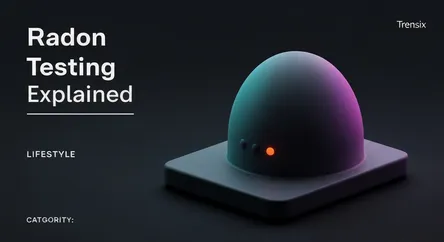Lifestyle
Radon Testing Explained

Learn what a radon test is and why it's a crucial step in home buying. Discover how this simple test protects your health from harmful radon gas.
What is it?
A radon test measures the level of radon gas in a building's air. Radon is a naturally occurring, colorless, and odorless radioactive gas released from the breakdown of uranium in soil and rock. It can enter homes through cracks in the foundation, walls, and floors. Short-term tests measure levels for 2 to 90 days, offering a quick snapshot, while long-term tests run for over 90 days to provide a more accurate year-round average. These kits are widely available for DIY use or can be administered by a certified professional during a home inspection.
Why is it trending?
Radon testing has become a standard step in many real estate transactions. With a growing focus on health and indoor air quality, buyers are more proactive about potential hazards. Home inspectors frequently include radon testing in their services, and some states or mortgage lenders require it. For a minimal cost, a test provides critical safety information, allowing buyers to negotiate for the installation of a mitigation system or simply make a more informed decision. It's now seen as a crucial piece of due diligence when purchasing a property.
How does it affect people?
The main concern with radon is its health risk. The EPA identifies it as the second leading cause of lung cancer, trailing only smoking. Because radon is undetectable by human senses, testing is the only way to determine the level of exposure within a home. A high test result isn't a reason to walk away from a deal; it's an actionable warning. If elevated levels are found, a radon mitigation system can be installed to effectively vent the gas outside, drastically reducing indoor concentrations and protecting the long-term health of the home's occupants.